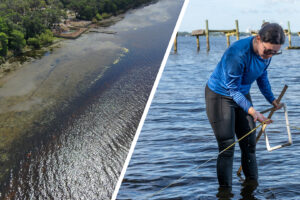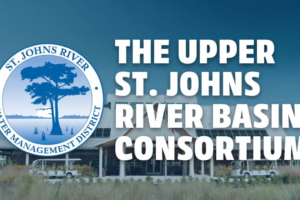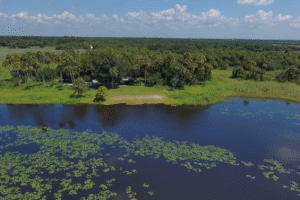Improving water quality in the Indian River Lagoon one project at a time
March 9, 2023
Upgrades to the Titusville Osprey Water Reclamation Facility added about 1 million gallons of concrete tankage (shown in the photos) to provide carbon, nitrogen and phosphorus removal. These upgrades contribute to reducing nutrient pollution in the Indian River Lagoon.
The city of Titusville is perched on the edge of the Indian River Lagoon, the most diverse estuary in North America. The lagoon is the cradle of the ocean — a nursery for thousands of species and the basis for an estimated 50 percent of east Florida fish catch. Having the lagoon in your backyard means dolphins and wildlife are as close as your kayak. And the communities that enjoy all the lagoon has to offer are taking steps to restore water quality by cutting the amount of nutrient pollution reaching the lagoon. The city of Titusville just completed a project that will do exactly that.
The Osprey Water Reclamation Facility was originally designed to remove phosphorus from reclaimed water but not nitrogen. Recent upgrades, including adding concrete tanks and modifying some of the reactors in the existing treatment process, allow the city to remove nitrogen and additional phosphorus.
These upgrades mean that Titusville residents now irrigate their lawns with water that’s lower in nitrogen and phosphorus — keeping these components of nutrient pollution out of the lagoon.
“Reducing the nutrients going into the environment means less nitrogen and phosphorus is running off into the lagoon,” explains Ashleigh Smith, an engineer with the city of Titusville. These new processes reduce nitrogen levels by 84 percent! For a facility providing 2.75 million gallons per day (mgd) to customers, this means that over 26,000 lbs. of nitrogen will be kept out of the area around the lagoon.
“Nutrient pollution is the single greatest threat to water quality in the Indian River Lagoon. We’re proud to provide funding to effective projects like the upgrades to the Titusville Osprey Water Reclamation Facility that contribute to restoring the health of the lagoon,” says St. Johns River Water Management District Executive Director Mike Register.
Thanks to the unique geography of the lagoon, the northern portion is far from ocean inlets, and water moves in and out thanks to winds rather than tides. At times, water can be stagnant for months, gradually accumulating nutrient pollution from nearby septic systems and stormwater runoff. Nutrient pollution contributes to increased frequency, duration and intensity of harmful algal blooms (HAB). These HABs limit the growth of seagrass that provides habitat and food for animals in the lagoon, including manatees.
The total cost of the project was just over $12 million, coming in under the projected budget of $13.5 million. The St. Johns River Water Management District provided $1.3 million through our cost-share funding program to improve water quality in the Indian River Lagoon. Additional funding came from the state of Florida ($500,000) and Save our Indian River Lagoon ($9.1 million).






